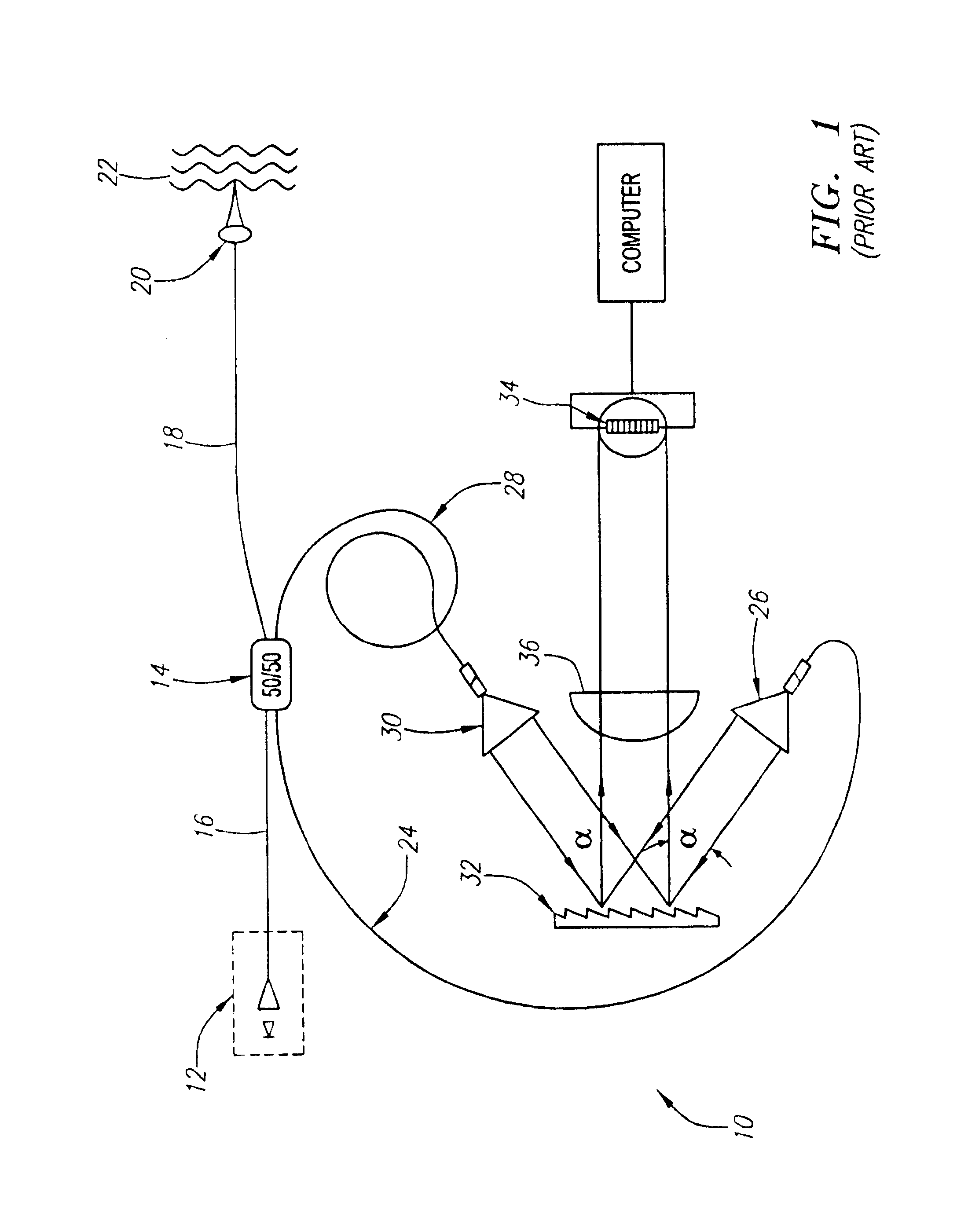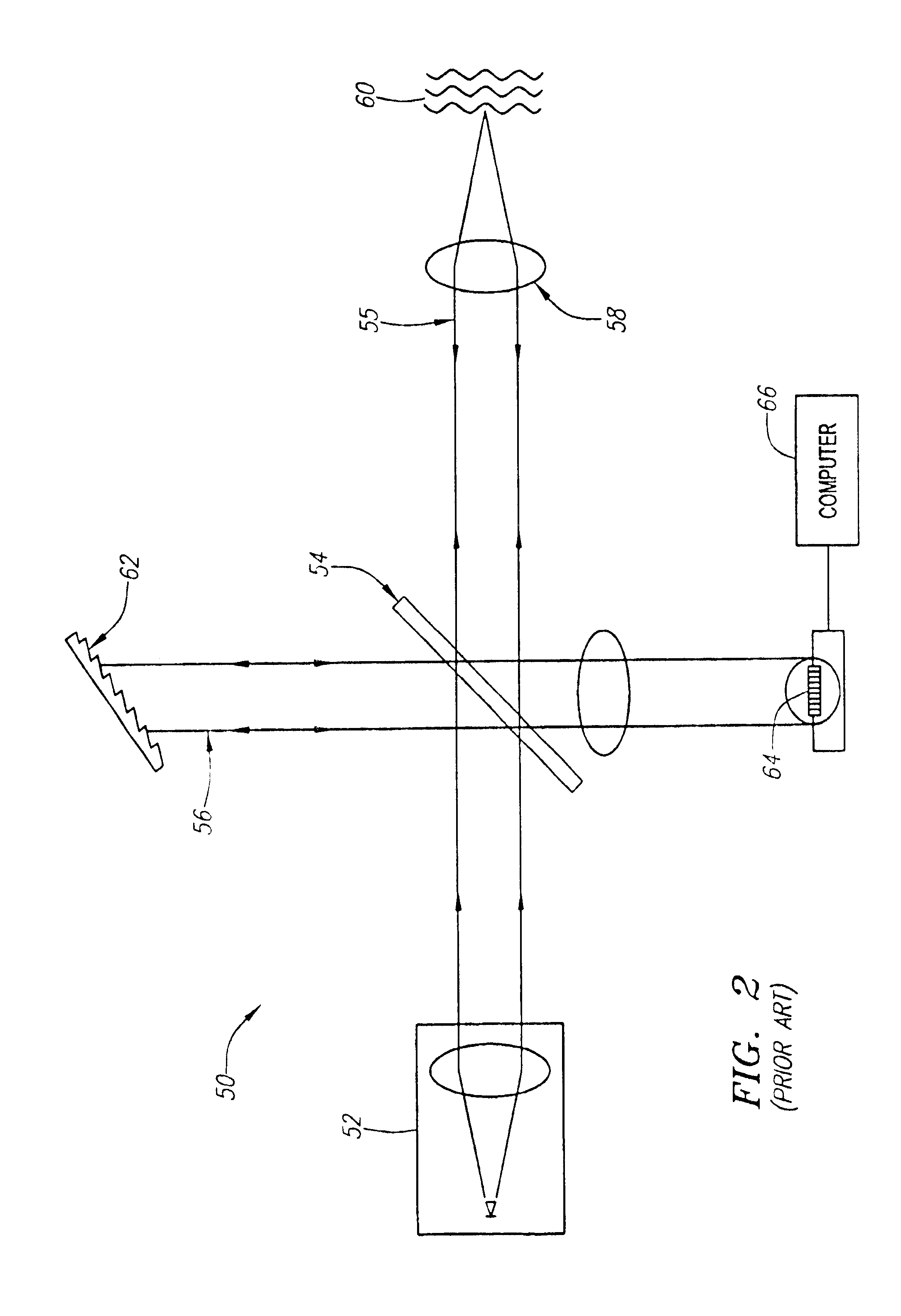Diffraction grating based interferometric systems and methods
a technology of interferometer and grating, which is applied in the field of diffraction grating based interferometer, can solve the problems of sample light beam suffering a significant loss of energy, sample light beam suffering a high loss of energy, and reference light beam suffering a further loss of about 50
- Summary
- Abstract
- Description
- Claims
- Application Information
AI Technical Summary
Benefits of technology
Problems solved by technology
Method used
Image
Examples
Embodiment Construction
[0039]FIG. 3a is a schematic diagram of one embodiment of a diffraction grating based fiber optic interferometric system 100. The system 100 comprises a light source 102 optically coupled to a fiber optic beam splitter 104 by an optical fiber 106. The fiber optic beam splitter 104 is preferably approximately a 50 / 50 beam splitter. More preferably, the beam splitter 104 is a 50 / 50 beam splitter. An optical fiber 108 is optically coupled to the fiber optic beam splitter and to a focusing lens 110.
[0040]An optical fiber 111 is also optically coupled to the fiber optic beam splitter 104 such that light entering the beam splitter from the optical fiber 108 is coupled into the optical fiber 110. The optical fiber 111 is also optically coupled to a first collimator 112. Another optical fiber 114 is optically coupled to the first beam splitter 104 and to a second collimator 116.
[0041]The optical fibers 108 and 110 comprise first and second parts of a sample arm, respectively, of the interfe...
PUM
 Login to View More
Login to View More Abstract
Description
Claims
Application Information
 Login to View More
Login to View More - R&D
- Intellectual Property
- Life Sciences
- Materials
- Tech Scout
- Unparalleled Data Quality
- Higher Quality Content
- 60% Fewer Hallucinations
Browse by: Latest US Patents, China's latest patents, Technical Efficacy Thesaurus, Application Domain, Technology Topic, Popular Technical Reports.
© 2025 PatSnap. All rights reserved.Legal|Privacy policy|Modern Slavery Act Transparency Statement|Sitemap|About US| Contact US: help@patsnap.com



